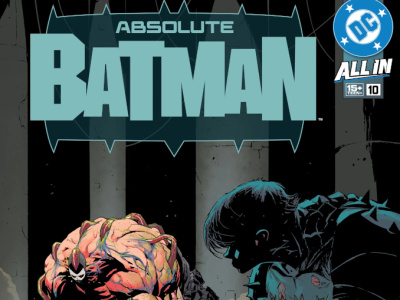We recently caught up with Viz Senior Vice President Liza Coppola to discuss the current state of the manga and anime markets, and what's coming from Viz. In Part 2, we talk about Viz's manga anthologies, the plans for Naruto in 2008, the 'next Naruto,' and Viz's fiction program. In Part 3, we talk about the anime market, including the relatively nascent shojo market, the sales channels for anime, Viz's live action program, and the comparison between the Japanese and American markets. And in Part 1, we talked about the manga market in the states, where it's sold, the number of releases in 2007 and 2008, and OEL manga.
We wanted to ask about the anthologies. You established those as important comic magazines, and they reach into some types of outlets that your books do not reach as well, so they're a great way to introduce new fans. Last time we talked, we discussed their role in the States versus their role in
It's the same strategy, but the manga audience is trained so much differently here than in
It's a way for the fans to interact and develop that relationship with the properties and with the brand itself. But I do think that for a lot of the properties, you're going to get them on a few different levels, it's not just in the magazine, it could be something on Cartoon Network or there's a different fan base level out there for it.
The Naruto Nation promotion this fall is going to put a lot of Naruto product out there, and you've also got a fair amount of Naruto licensed product. Can Naruto grow as a brand in 2008 versus 2007?
Absolutely. We're thinking we're just at the tip of the iceberg for 2007; I think 2008 is when that momentum will really come to fruition. We have a task force right now of key players -- everybody from Mattel, Cartoon Network to Video Game Licensees -- and it's a Naruto Nation mini task force where we're sitting down and mapping out how to keep that momentum going and how to grow it. We're also going out there to retailers and discussing with them how to build a mini Naruto Nation at their stores. There are a lot of plans being set in place for 2008. I think we're at that tip of the iceberg right now, and we're definitely not where we're going to be in 2008.
It seems like a lot of stuff out there, with Books-A-Million, Barnes and Noble, Waldenbooks, Borders all have dedicated Naruto displays in their stores. We have thousands of Naruto displays that have volumes 16, 17, and 18 out there. For the first time, Naruto was featured in Wal-Mart's magazine's All You in a feature that talks about what kids are reading. It's the first time a manga property has been featured in there.
Books-A-Million has their publication Book Page, and it's the first time a manga property has had the cover of Book Page. We're seeing all of this stuff out there for Naruto for 2007, but I think 2008, that's when everything starts hitting. It's not led by publishing, but it's led by this Naruto Nation where you'll see things from Cartoon Network, from Mattel, from the video game licensees, and it will be a brand versus Naruto publishing or the Naruto Wii game that's coming out -- it will be much more unified.
Is there anything in your pipeline for the next 12-18 months that has the potential to be a mass brand on that scale, other than Naruto?
Blue Dragon is one of the other properties that we've identified as a pretty huge program, with all the history and everybody involved with it; the fact that Microsoft is a key partner; you've got Toriyama on there and some incredible talent involved. So that's another one we know has huge potential.
We wanted to talk a little bit about fiction, which is a growing part of Viz's publishing output. You've got a fairly eclectic mix of titles. Some of them are tied to brands, and then you've got something like the
What we publish doesn't really fall under that category of light fiction. It's probably more pure fiction than the traditional version of light fiction. Letters from Iwo Jima was one title that we had in there.
We have such a wealth of property from our parent companies and we have a great acquisition team--they're very pro-active about seeing what's available in
Fiction is something that we're going to continue trying to grow. We're definitely looking for titles that make sense. We don't want to publish things that are one-offs, that there isn't anything that's relevant that's tied to it.







